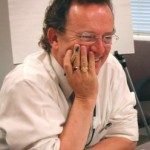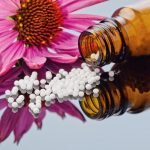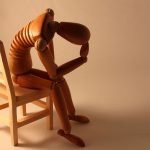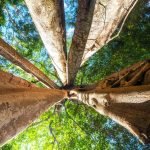Signifiers Among Us: How Professions Take Shape
David J. Schleich, PhD
Education
The process of self-determination for any heterodox professional group is uphill, often with a cold wind. The owners of whatever orthodox market terrain is being challenged will not yield ground willingly. Their authority, influence, and income depend on stopping those wanting some of that turf. In this regard, the literature of professional formation shows that the dominant biomedicine profession, for example, has fiercely defended its control, sometimes even assimilating newcomers as a strategy. They have done this vociferously since the Carnegie Foundation’s Flexner Report in 1910 shifted how medicine did business in North America.
Meanwhile, from its very inception in the early days of Benedict Lust in New York, the naturopathic profession has had a track record of professional formation that has been inconsistent and sometimes volatile. The mainstream allopathic medical profession has benefitted from how long it took the naturopathic doctors to get their process in order (that is, accredited programs and schools, regulatory legislation, the beginnings of scaling). The allopathic medical profession, most particularly through its voluntary association, the AMA, has pushed back hard for over a century on all other professions in the healthcare sector in America. Thus, such terms as “complementary” and “alternative” (complementary to what? Alternative to what?) In recent years as well, there are new terms which characterize this longstanding rivalry: “holistic,” “functional,” and “integrative.” Adding to the fray, the early NDs themselves squabbled about the right signifiers to embrace and the most useful professional formation paths to take. Even today, some naturopathic doctors eschew primary-care status while others crave it.
In recent years something new is chipping away at the hegemony of biomedicine. Public and patient interest in a more holistic, patient-centered paradigm – a space long defended by naturopathic professionals – is gaining traction inter-professionally. For example, where at one time, not so long ago, the allopathic medical establishment dismissed the fundamental importance of nutrition in graduate medical education, there has been a ramping up of interest in Food As Medicine, championed forever by naturopathic doctors. As is the norm with dominant, orthodox bodies, the allopathic profession has begun to claim nutrition practice principles as their own. The naturopathic profession did not get it together soon enough to claim that ground. In that regard, for example, Wheat Belly and Grain Brain were not written by naturopathic doctors, but totally should have been.
In any professional formation trajectory, alongside the achievements which gave the allopaths, for example, control of the healthcare wheelhouse in the early years, the dominant group is ever alert to co-opt such new opportunities. And, as is also the case concomitantly, the identity and priorities of the heterodox pretender are affected by what that group fights. Adding even more to the equation of change, teachers and clinicians within the dominant profession are already assimilating modalities and approaches in elements of our Therapeutic Order that were eschewed and even scorned until very recently. In any case, the entire, prolonged fuss and rattle of such tension will inevitably yield to the arrival of a better mousetrap in the market, and patients will be glad of it. Meanwhile, during the skirmishes, whoever owns the signifiers of that better mousetrap gets to hang on to the steering wheel and control the fob.
Stethoscopes as Signifiers
Let us take a brief look at a few examples of well known signifiers in the medical profession, with the intention of identifying who owns them. There are social dimensions to professional formation that produce emblems of all sorts, such as insurance codes, rights of access to products, tests, and related health services, and wide-ranging branding messages which by default show up in the civil society. TV shows, deferential bureaucratic systems, and institutionalized stereotypes abound, and rarely are non-biomedicine professionals represented.
There was a time in the boomer era when getting admitted to a medical school, and thus to the prospect of a lucrative career in medicine, meant moving into the exclusive waiting room for the upper-income tax brackets. Certainly, this was true soon after Flexner. Less so, in our time. Nevertheless, a sizeable portion of the naturopathic profession yearns for such recognition and social closure, like a small river yearns for the sea even though there are mountains and plateaus and flood plains in the way.
Emerging out of this effort, on the part of the naturopathic profession to find a legitimate berth in civil society, have been many powerful signifiers, some of which bring with them contrary imperatives. For example, there is something as basic as “protected title.” There is the pervasive signifier of the stethoscope and the white coat. And there is the hugely more complex signifier of the control of structure and content in medical education. Let us begin with the latter to make this point more fully.
The Structure of Professional Education
As Schon (1987, 1995) pointed out over 3 decades ago, the naturopathic profession is no different than any other profession in the way it has structured the learning that prepares graduates of our programs for entry to practice and the pathways for new content to translate into that formal preparation process. First, there are the basic sciences of a discipline; then the applied sciences; and, finally, a supervised practicum of some sort. Everything tucked and zipped tight in a tri-partite framework. Of course, there are abundant variations, depending on the profession or the discipline, manifesting in terms of time spent, assessment, civil authority licensing, methods of ongoing certification or registration, cost, and placement. Within that framework of what Donald Schon called “technical rationality” curriculum, there are also delivery standards that take hold and persist, often for long periods.
Naturopathic Medicine is a Medical System, Not a Specialty
The teachers and practitioners of naturopathic medicine – a heterodox medical system in a healthcare terrain dominated by allopathic or biomedicine since the era of Abraham Flexner – use the term “the medicine” to describe what they are loyal to. They also invariably describe their system of naturopathy to be homogenous, rather than a field of study populated by many disciplines. Not as consistent in such conversations is the reality that the naturopathic system, alongside biomedicine, is increasingly housed in institutions dedicated to academic inquiry and the epistemology, terminology, and discourse of biomedical science.
Thus, the signifiers of “the medicine” get mixed in with notions of science, evidence, and translational research. Where in that sea of emblems of professional medicine do the roots and traditions of naturopathic medicine reside or, more pointedly, survive? A parallel, urgent question arises: at what point does so-called traditional curriculum and clinical emphasis become more allopathic than naturopathic? And, added into the equation, who is to determine when that threshold has been crossed? Certainly, post-graduate programs must respond to state health authority scope and practice requirements (eg, parenteral therapies, vaccinations) at the very intersection of civil authority to practice, and essential medical content and skills negotiated into new legislation that expands the scope and responsibilities of NDs. And, just as we might want to reflect on how stethoscopes, signifiers of biomedicine chiefly, became part of our toolkit, so too we might want to ascertain how the well-trodden path of “technical rationality” referenced above became the de facto framework for our curriculum, despite the dilutions and bruising which that structure over time brings into the professional formation of our students.
Adding confusion and wobbles in timing for professional formation are the variations in scope, protected title, controlled acts, and oversight state by state and province by province. What an ND can do in North Dakota or Minnesota is different from what s/he can do in Vermont. What an ND can do in Ontario is different from what s/he can do in Nova Scotia or Quebec. The subject matter (content) of curriculum, when juxtaposed with the mainstream medical school’s choices, is increasingly converging. As more states and provinces accept naturopathic doctors into the protected category of “primary care,” compliance with content and skills show up that are more akin to the mainstream graduate medical education. The signifiers of such education include expansion of pharmacology and the reduction of time spent on, say, homeopathy, hydrotherapy, and lifestyle counseling. Groups such as NMI (Naturopathic Medicine Institute) emerge to report these changes in curriculum structure and announce a mandate to keep the traditions of the medicine alive. Students themselves develop learning opportunities with such recurrent events as “the Gathering” and the various “Revitalization” retreats which have occurred at NUNM, SCNM, Bastyr, and BINM for a number of years now.
Graduate Medical Education is a Status Signifier
Another highly valued signifier of professional formation in medicine (also evoked as a standard for medical training quality) is placement in a residency program after graduation. We have adopted that path, in parallel with its evolution and refinement in the allopathic sector. The contemporary model of naturopathic medical education has embraced a widely understood signifier of excellence in medical preparation, contemplated by Schon in his label, “practicum training” in Tier-3 of his model.
Our residency training is self-funded and tiny. There aren’t enough residency opportunities to go around, alas, since the profession is excluded from participation in the Medicare-financed National Resident Matching Program (NRMP), whose mathematical algorithm is configured to place applicants into residency and fellowship positions. Access to “the Match” rejects any but the biomedicine graduate. Only students from LCME-accredited allopathic schools (MD or DO), and some US citizen and some non-US citizens from international medical schools accredited by the Liaison Committee on Medical Education (LCME), need apply. We go our own way in parallel, smaller, unrecognized paths. Our grads do not do rotations in hospitals that benefit from public money. If they did, the signifier of that accomplishment would be hugely valuable in professional formation efforts.
Peripheral Signifiers We Love and Use
There are also peripheral signifiers which abound in medicine. For example, we adopted the caduceus and the stethoscope, constituent elements in the iconography of the naturopathic physician in North America. Some elders in the profession contend, though, that in comparison to the white coat, the latter emblem, especially when NDs choreograph their publicity photos with one draped around their neck against a backdrop of the white coat, is the worst lame emblem of what the naturopathic medical profession is doing to itself. In naturopathic medical education, such emblematic features can be pernicious at the same time as they are hugely valuable by virtue of their instrumentality. The question is: whose signifier is it?
Let’s take a moment to check out how the stethoscope got to us. It is inherently emblematic of the allopathic physician, but has found its way into our clinical practice and into our branding too. There are very good reasons for both naturopathic and allopathic doctors to use a high-tech, bi-aural stethoscope to aid in the process of auscultation, important in a doctor’s inclusion or exclusion of different pathological conditions, most particularly related to the circulatory, respiratory, and gastrointestinal systems. In 1816, Dr Rene Theophile Hyacinthe Laënnec introduced an early, simple wooden model to his colleagues in France. He later described it in “De L’auscultation Mediate” (Rougin, 2006) as very valuable for capturing audible data about patients, especially women, as this method was more reliable and socially appropriate than leaning an ear against the chest and back of the subject. This tool, which has also become an emblem, is not what is especially troubling. Rather, there are systemic practices that are more evocative of what the naturopathic profession has assimilated over time and which, some would argue, are evidence that we are slowly risking becoming what we have fought all along.
Clearly, signifiers – whether they be huge and complex, or simpler and immediately functional – influence not only who patients think we are, but also who we think we are. As the pressure mounts during a time of declining matriculant pools, gradually increasing responsibility exists, alongside decreasing levels of supervision for our doctors in training, to gain competence as they move toward a later stage of unsupervised practice.
Whatever designs we affix to naturopathic medical education programs, whether it be toward a competency-based continuum along the entire path of the experience, or a more static, less expensive framework, as we direct our grads into nonhospital, ambulatory, and full clinic settings where the experiences are robust, we must take care with our signifiers, big and small. The emphasis we place on biological sciences, physical sciences, and pharmacology are already slamming our identifiers with ambiguity. Our graduates face the same terrain of chronicity as the allopathic graduates. As naturopathic medical educators build up curriculum that equips our grads to deal with disease prevention, health promotion, population health, chronic disease, addiction, how we present ourselves in the community, and our philosophical framework for healing, we can generate a few signifiers of our own through the form and content of our curriculum. The literature of professional formation shows that naturopathic doctors were attuned to the social determinants of health long before their biomedicine colleagues. We don’t want to lose that edge, the pride of that tradition, and the urgency of shaping signifiers of our own that the public can readily discern.
As the Buddhist principle attests, “When the student is ready, the teacher appears.” Our students are ready. Our teachers are ready. Incidentally, so too are social disruptors such as Lyft, an enterprise wanting to know to which providers to transport patients. Everything is up for grabs, it seems.
References:
Schon, D. (1995). Knowing-in-Action: The New Scholarship Requires a New Epistemology. Change, 27 (6), 27-34.
Image Copyright: <a href=’https://www.123rf.com/profile_udra’>udra / 123RF Stock Photo</a>
 David J. Schleich, PhD, is president and CEO of the National University of Natural Medicine (NUNM), former president of Truestar Health, and former CEO and president of CCNM, where he served from 1996 to 2003. Previous posts have included appointments as vice president academic of Niagara College, and administrative and teaching positions at St. Lawrence College, Swinburne University (Australia) and the University of Alberta. His academic credentials have been earned from the University of Western Ontario (BA), the University of Alberta (MA), Queen’s University (BEd), and the University of Toronto (PhD).
David J. Schleich, PhD, is president and CEO of the National University of Natural Medicine (NUNM), former president of Truestar Health, and former CEO and president of CCNM, where he served from 1996 to 2003. Previous posts have included appointments as vice president academic of Niagara College, and administrative and teaching positions at St. Lawrence College, Swinburne University (Australia) and the University of Alberta. His academic credentials have been earned from the University of Western Ontario (BA), the University of Alberta (MA), Queen’s University (BEd), and the University of Toronto (PhD).










